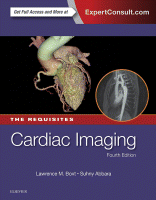Physical Address
304 North Cardinal St.
Dorchester Center, MA 02124

Cardiac malformations are the most common congenital anomalies. The reported incidence of congenital heart disease (CHD) varies widely because of differences in counting minor lesions. The incidence of moderate and severe forms of CHD is about 6/1000 live births. This…

Introduction Primary cardiac problems can influence the function of other organ systems. Similarly, diseases or abnormalities in other organ systems can result in secondary cardiac dysfunction. Ascertaining the afflicting primary abnormality can pose a diagnostic dilemma. To illustrate, in a…

Valvular heart disease is a significant clinical problem, with a reported prevalence of 2.5% in the United States. Between 10% and 20% of cardiac surgical procedures in the United States are performed for the treatment of valvular disease. Some of…

Pericardium Anatomy The pericardium can be thought of as two layers of a deflated balloon, which is wrapped around the heart. One side of that balloon becomes the inner layer (visceral layer), which is wrapped around and closely adheres to…

Coronary artery disease is by far the leading cause of mortality and morbidity in the western world. The impact of coronary heart diseases and related atherosclerotic conditions like stroke, in terms of reduced quality of life, life-years lost, and direct…

Cardiac computed tomography (CCT) has become a mainstream imaging tool for the assessment of coronary atherosclerosis and changes resulting from pericardial, valvular, and myocardial heart disease. Computed tomography (CT) use had always been limited by relatively long acquisition time and…

Cardiac magnetic resonance (CMR) imaging provides high-spatial and temporal resolution imagery from which reproducible morphologic and functional information can be obtained for the evaluation and management of patients with cardiovascular disease. Substantial progress in the design and application of new…

Echocardiographic Examination Two-Dimensional Transthoracic Examination During the routine echocardiography examination, a fan-shaped beam of ultrasound is directed through a number of selected planes of the heart to record a set of standardized views of the cardiac structures for subsequent analysis.…

Roentgen’s discovery of x-rays was immediately translated into a clinical imaging tool, visualizing previously invisible internal organs, including the heart and great vessels. Correlation of early descriptions of abnormal cardiac shape and size with clinical examination and (all too frequently)…